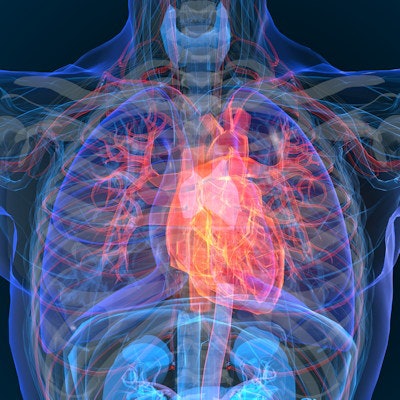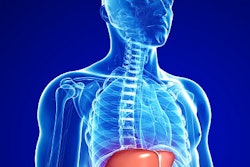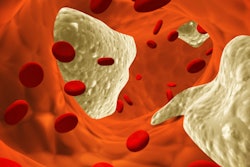
Atherosclerosis and vessel morphology can be evaluated in non-ST-elevation myocardial infarction (NSTEMI) patients by an artificial intelligence (AI) model, according to an e-poster at the Society of Cardiovascular Computed Tomography (SCCT) annual meeting.
After retrospectively applying an AI algorithm to coronary CT angiography (CCTA) exams from over 50 patients with a low to intermediate-risk NSTEMI, researchers from George Washington University School of Medicine found that high-risk plaque was present in over half of the patients. They also found that those with obstructive stenosis had significantly higher plaque volumes.
"[AI]-guided quantitative evaluation of atherosclerosis by CCTA in low- to intermediate-risk acute coronary syndromes identified a high burden of overall plaque volume, including low-density noncalcified plaque, noncalcified, plaque, and calcified plaque in vessels with obstructive stenosis," said presenter Dr. Pedro Covas of the George Washington University School of Medicine. "Atherosclerosis burden in nonobstructive vessels was primarily comprised of noncalcified plaque."
The use of CCTA is evolving in patients with low- to intermediate-risk NSTEMI, according to Covas. However, quantitative assessment of atherosclerosis and vessel morphology from CCTA has rarely been performed in patients with acute coronary syndrome or by AI-guided CCTA analysis, he said.
As a result, the researchers sought to evaluate atherosclerosic plaque characteristics identified through an AI-guided approach in NSTEMI patients. They retrospectively gathered data for 53 patients with NSTEMI who had received CCTA at the time of presentation.
The cohort of 53 low- to intermediate-risk NSTEMI patients, of whom 42% were women and 58% were African Americans, had a median age of 57 ± 12.7 years. These patients had a median Global Registry of Acute Coronary Events (GRACE) risk score of 92.6 ± 22.7 and a median troponin I level of 0.266 ng/ml.
Next, the researchers utilized a commercially available software application (Cleerly Labs, Cleerly Health) to perform blinded core lab quantitative atherosclerosis characterization for every coronary artery and its branches. The researchers had previously validated the software for quantifying stenosis on CCTA exams.
In the new study, the software analyzed atherosclerotic plaque characteristics, including the following: percentage diameter stenosis, plaque atheroma volume, noncalcified plaque volume, calcified plaque volume, low-density noncalcified plaque, positive remodeling, percentage of atheroma volume, lumen volume, and the presence of high-risk plaque.
There were a total of 79 vessels with obstructive stenosis (50% or more) and 359 vessels with less than 50% stenosis. High-risk plaque was found in 57% of the patients. Covas noted that two of the patients had spontaneous coronary artery dissections and were included in the study.
| AI-based analysis of plaque in NSTEMI patients | |||
| All patients | Per-vessel, nonobstructive stenosis (< 50%) | Per-vessel, obstructive stenosis (≥ 50%) | |
| Mean total plaque volume | 286 mm3 | 21.5 mm3 | 94.3 mm3 |
| Mean high-risk plaque volume | 14.7 mm3 | 0.6 mm3 | 7.3 mm3 |
| Mean noncalcified plaque volume | 174.3 mm3 | 13.6 mm3 | 54.9 mm3 |
"Interestingly, 62% of patients exhibited positive remodeling," he said.
The researchers acknowledged a number of limitations to their study, including its retrospective, observational, and single-center nature. In addition, "the outcomes of AI atherosclerosis-guided management are not yet known in [acute coronary syndrome] and NSTEMI patients," Covas said.





















